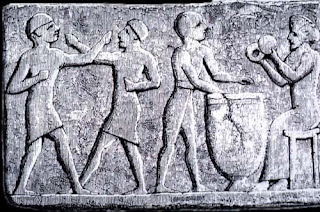The Enigmatic Origins of Okinawan Martial Art Ti: Tracing its Roots to Mesopotamia
Okinawan martial art Ti, also known as Te or Tode, is a martial art with a rich history that originated on the island of Okinawa, Japan. However, there exists a fascinating theory that suggests its roots can be traced back to the ancient land of Mesopotamia, modern-day Turkey and Iraq. This essay aims to explore the hypothesis that Ti has its origins in Mesopotamia by highlighting the similarities between Mesopotamian ideas and Okinawan martial arts, supported by archaeological evidence.
Before delving into the possible Mesopotamian origins of Ti, it is crucial to briefly understand its history in Okinawa. Ti emerged on the island during a time when its ruling class had forbidden the usage of weapons, leading to the development of unarmed combat techniques. Okinawan masters began to blend local martial art Ti with Chinese and Southeast Asian influences, giving birth to Okinawan Karate. The ancient civilizations of Mesopotamia and Okinawa shared some striking similarities in their philosophical ideas. For instance, both cultures believed in the importance of balance, harmony, and the use of circular movements in combat. These concepts are integral to Okinawan martial arts, including Ti.
Archaeological evidence reveals that the ancient Mesopotamians practiced hand-to-hand combat techniques that bear striking resemblance to those found in Okinawan martial arts. Excavations in Mesopotamia have unearthed stone reliefs depicting warriors engaged in combat, using open-hand strikes, finger techniques, joint locks, and grappling maneuvers - all of which are also found in Okinawan Karate.
Mesopotamia was a central hub for trade between East and West, with merchants traversing through its territories. It is plausible that these trade routes facilitated the exchange of ideas and martial arts techniques between Okinawa and Mesopotamia. Archaeological discoveries in Mesopotamia have unearthed numerous stone carvings and reliefs showcasing combat scenes, which provide tangible evidence of the existence of martial arts during that time. These depictions exhibit techniques that bear remarkable resemblance to those used in Okinawan martial arts, further supporting the theory of their shared origins.
Language plays a significant role in tracing cultural influences. Interestingly, both Okinawan and Mesopotamian martial arts share certain terminology and weapons. For example, the term "Ti" in Okinawan martial arts is linguistically similar to the Sumerian term "ti" ," meaning "spirit" or "god." Moreover, Okinawan martial arts weapons such as the sai and tonfa have striking similarities to ancient Mesopotamian weapons like the shashka and sickle-sword.
While the Mesopotamian origins of Okinawan martial art Ti remain a subject of debate and further research, the existence of notable similarities between the two cannot be ignored. From shared philosophical concepts to similar combat techniques and archaeological evidence, the theory gains plausibility. However, more extensive research, including linguistic analysis and historical records, is required to establish a definitive connection between Ti and Mesopotamia. Understanding the roots of Okinawan martial arts not only enhances our appreciation of its cultural significance but also illuminates the interconnectedness of ancient civilizations across the globe






Comments
Post a Comment